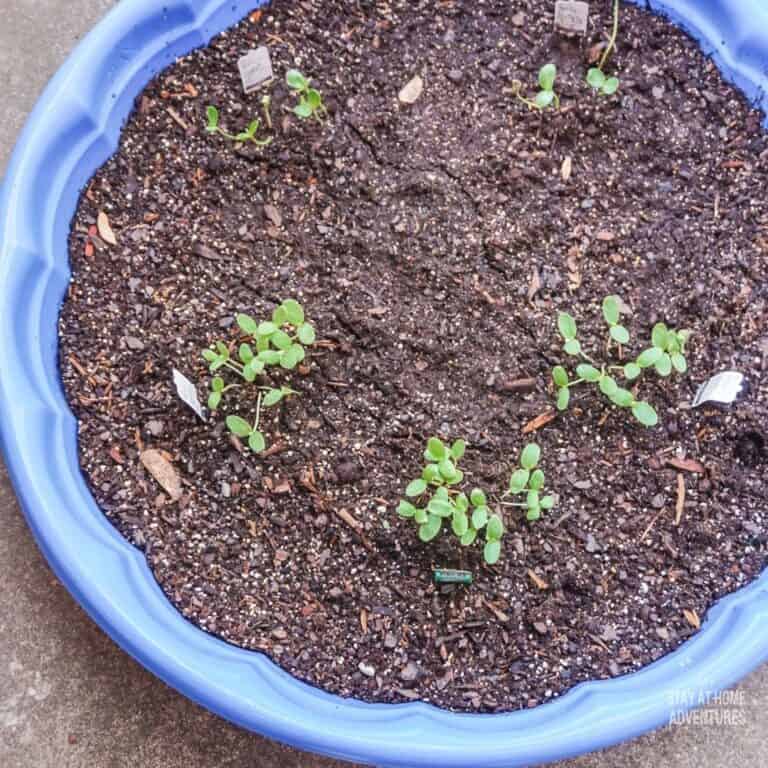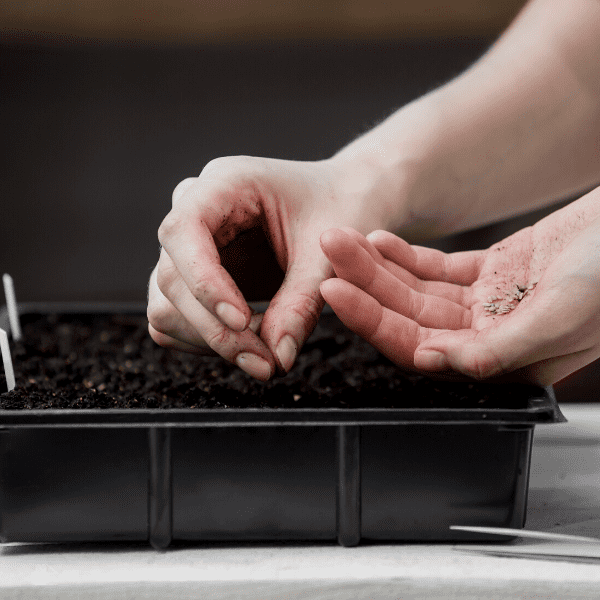DIY Garden Soil
This post may contain affiliate links which might earn us money. Please read my Disclosure and Privacy policies hereDIY garden soil is something you may have considered making, but you may have felt intimidated. The truth is it is super easy to make your own garden soil. Homemade garden soil can also be more affordable.

Not to mention, being in control of what your plants grow in, especially those grown for eating, makes you feel better about your plants' growth and what you’ll be feeding your family. Let’s take a look at how to make garden soil mix.
Table of contents
What is this DIY garden soil for?
This garden soil is great for growing fresh fruits and vegetables, especially if you’re growing in pots or a raised garden bed and will be relying on the soil you’re adding to be good for your plants.
You could also use it for flowers and such, but know that it is great for your fruits and vegetables.
Gardening posts you will love:
What is the best mix for garden soil?
The best mix for garden soil is 60% topsoil, 30% compost, and 10% potting soil. There is a reason for each ingredient.
For example, if you use nothing but topsoil, your plants don’t have anything to gather nutrients from. The compost is what feeds your plants.
Depending on exactly what you’ll be growing, you may need to add some additional ingredients to alter the soil's acidity. However, this is a good base mix.
How do I make good soil for my vegetable garden?
Good garden soil has plenty of topsoil and compost. You’ll know you have the right blend of ingredients when the soil can be compacted in your hand when squeezed but will easily break apart when distributed.
This ensures that the roots have the best chance at thriving in your soil. If the soil is too dense, the roots will struggle to grow.
Obviously, this will lead to plants that aren’t as healthy and abundant in yield as they could be. Again, this DIY garden soil is great for vegetables.

How do I make my own soil?
You will first need to shop for your ingredients. Like a good recipe, you’ll want the best of the best.
This isn’t the time to be buying dollar store potting soil. Save that for your flowers. This is what you’ll be growing your food in.
Isn’t it worth the extra expense?
If you’re filling raised garden beds, layer the ingredients and then use a rake to mix them together. You want to get an even distribution of the ingredients throughout your beds.
The same goes for planters. Layer the ingredients and then use your hands to mix the ingredients. You can also mix the ingredients in a wheelbarrow or kiddie pool.
DIY soil ingredients:
As mentioned, your DIY garden soil has three ingredients: topsoil, compost, and potting soil. Let’s take a closer look at each ingredient to see why each is important to your mix.

Topsoil
Topsoil is just what it sounds like – the top 5 to 10” of your lawn. You can purchase topsoil or mix ingredients with your own topsoil.
Organic matter and microorganisms have the highest concentration in topsoil. These are essential for your garden.
The exact makeup of topsoil will depend on the area. For example, some topsoil may be more acidic than others.

Compost
Compost is organic material that has decomposed. It can be made up of vegetable and fruit scraps, houseplant trimmings, dead plants, sod from old garden beds, eggshells, holiday greenery, old herbs, coffee grounds, and tea bags or leaves (be careful if you have a problem with acidic soil), and old produce that is no longer good to eat.
You do not want to add things like dairy or meat to cause odor problems and attract pests. You also don’t want to add diseased plants to cause the disease to spread to your other plants.
If you don’t have the space to have a compost bin, you can also purchase compost. Just keep in mind that it won’t be as fresh as if you had made it yourself.

Potting soil
Potting soil is a confusing term as it actually doesn’t contain soil. Instead, it is made of peat moss, perlite, and/or vermiculate.
The purpose of potting soil is to add moisture balance. This is crucial if you’re growing your plants in containers or raised beds.
That’s it. You’re ready to start mixing your DIY garden soil so that you can fill your beds and start growing. Soon, your small plants will grow into vegetable and fruit-producing plants that will feed your family this summer.
If you’ve done things properly, you’ll end up with high yields that will allow you to freeze or can excess produce for the fall and winter.







Don’t promote anything with peat in it!!!!!!! The planet and future humans will not thank you!